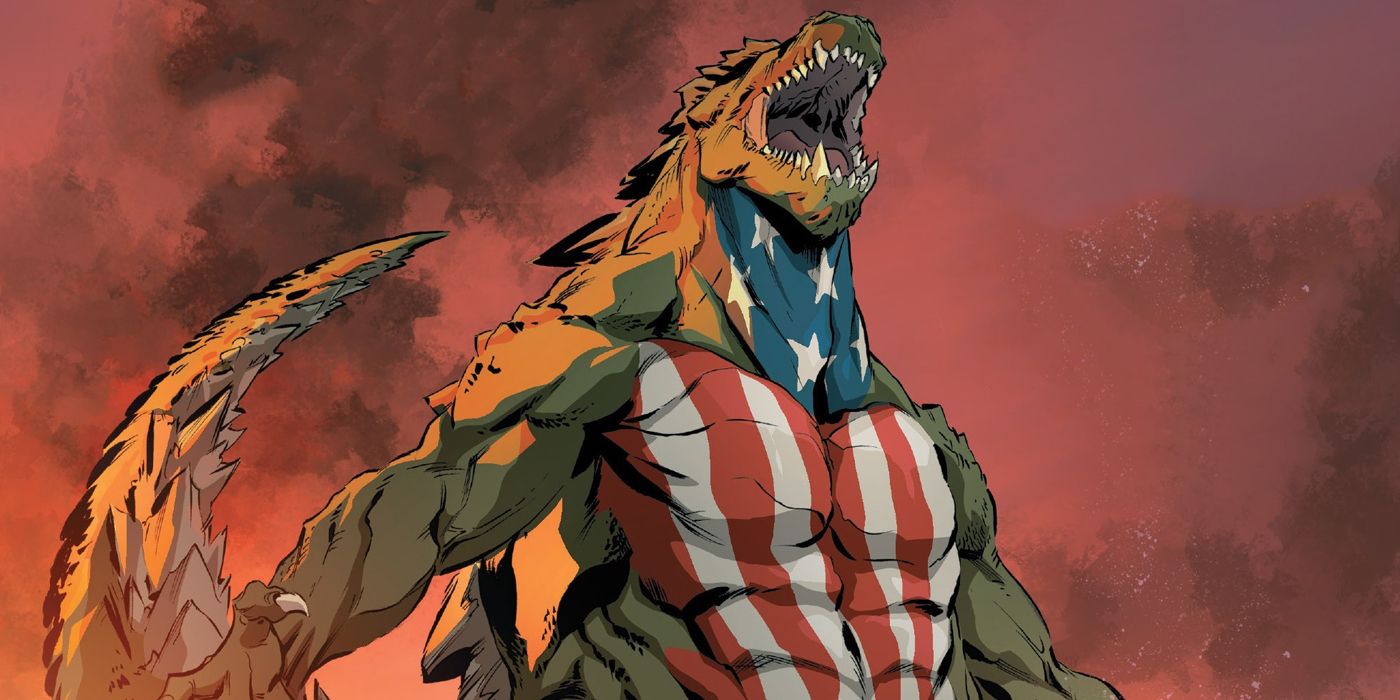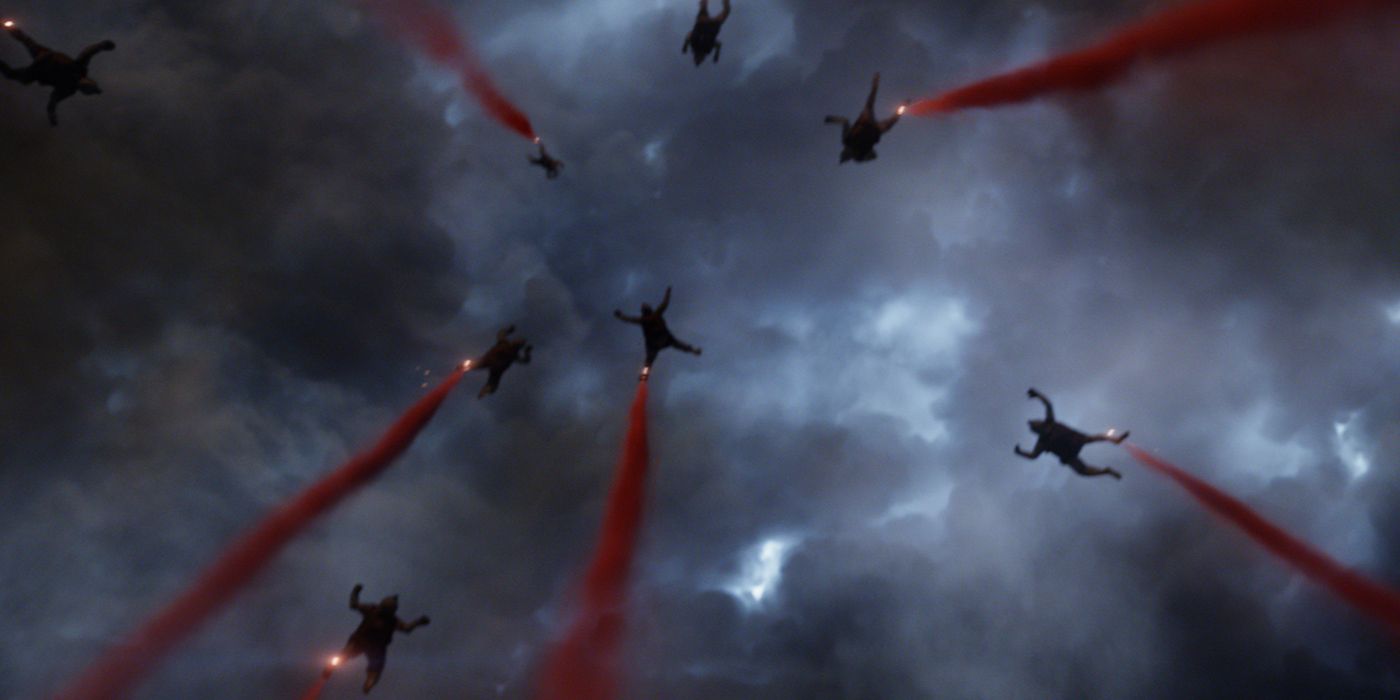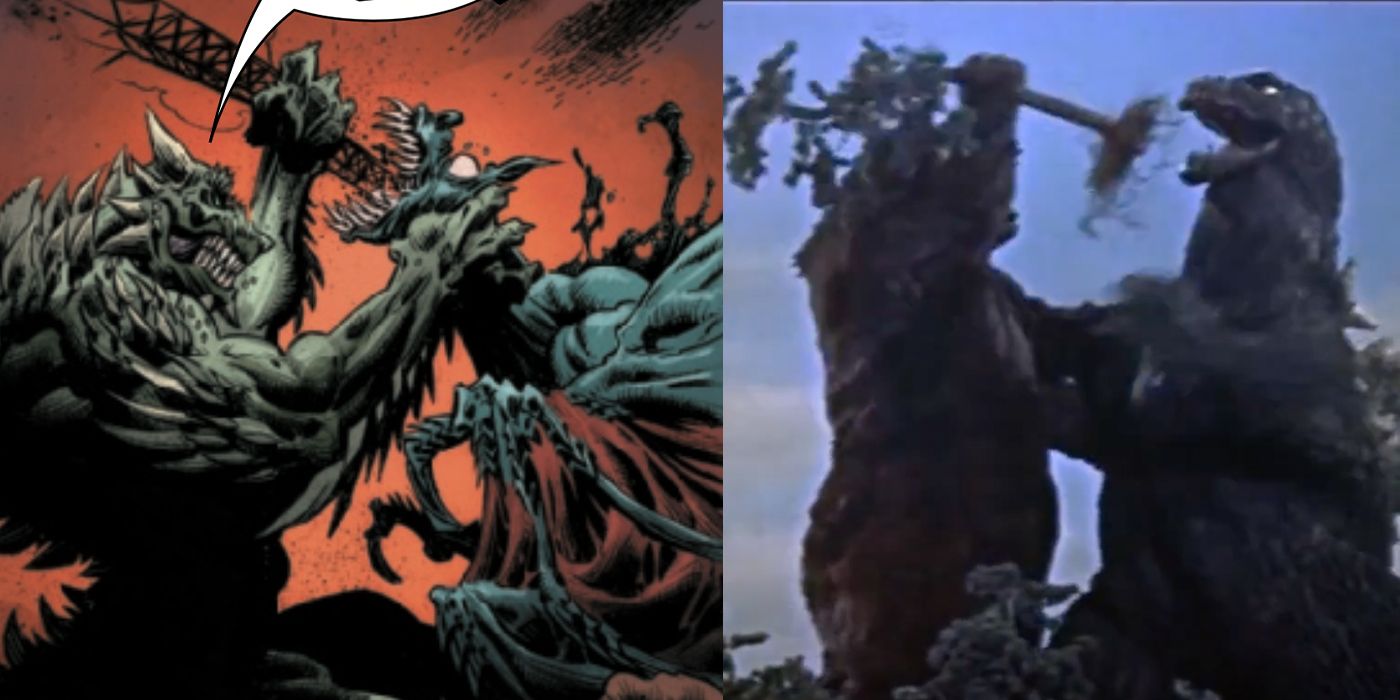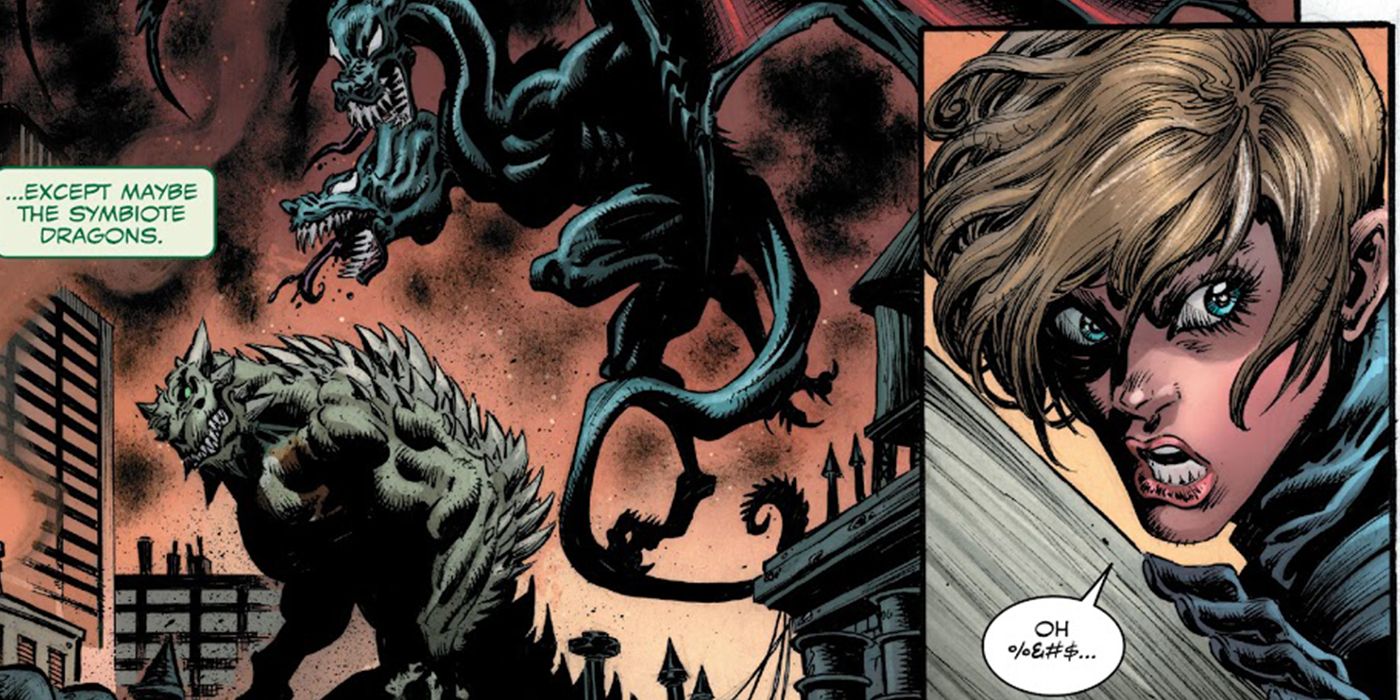The Iconic Kong and Godzilla Moments Marvel Parodies in King in Black

Warning: spoilers for Planet of the Symbiotes #2 are ahead.
Godzilla and King Kong are some of the most iconic monsters in fiction, and their influence extended to Marvel Comics' American Kaiju in the King in Black storyline. In Planet of the Symbiotes #2, Marvel's version of Godzilla, American Kaiju, faced off against Knull's hordes of Grendel dragons in an epic showdown on par with King Kong and Godzilla. The issue was written by Marc Bernardin, with art by Kyle Hotz, colors by Rachelle Rosenberg, and letters by VC's Cory Petit. Not surprisingly, there were a couple nods to Kong and Godzilla in the issue that helped enrich a story surrounding one of Marvel's most under-appreciated characters.
American Kaiju teeters the line of parody, with everything from his backstory as a United States Army corporal named Todd Ziller (which sounds an awful lot like "Godzilla), to the American flag emblazoned on his chest, to his "YUUUUUU ESSSSSSS AYYYYY" battle cry. Given the amount of Marvel characters who represent some aspect about their country of origin, American Kaiju fits right in as a particularly dramatic expression of militaristic American patriotism.
As a character, American Kaiju is an homage to the Japanese kaiju, or giant monster, genre that has proliferated in film and comics for many decades. The first Godzilla film was released in 1954, and told the story of a giant lizard monster from the ocean who was awakened when the use of nuclear weapons during World War II disturbed his habitat. While Godzilla's significance can be interpreted in a number of ways, he can also be seen as the environment's response to the bombing of Hiroshima and Nagasaki the decade before. All of this makes American Kaiju a meta-commentary on the kaiju genre itself.

Likewise, King Kong debuted in 1933 with his own self-titled feature film about a giant gorilla on the loose in the remote Skull Island. While Kong was a Hollywood invention, he was incorporated into Japanese Godzilla films in the 1960s, becoming a mainstay of the kaiju genre. Subsequent reboots of both Kong and Godzilla films within the past twenty-five years have indicated that the genre is alive and well in the minds of fans.

The progression of American Kaiju's fight against the symbiote dragons mirrored two key moments from Godzilla and King Kong media. The first is a reference to the 2014 Godzilla film, directed by Gareth Edwards. Towards the film's final act, a team led by Ford (Aaron Taylor-Johnson) parachutes down to San Francisco to recover a nuclear warhead that had been taken by a group of MUTOs (Massive Unidentified Terrestrial Organism). This HALO jump scene is one of the most riveting parts of the film, as the camera follows from the perspective of the parachuters as they free fall past Godzilla himself.
In Planet of the Symbiotes #2, a parachuter falls in and lands on American Kaiju's back. And while she is there in order to administer Ziller an anti-serum to transform him back into human form, her presence harkens back to Edwards' film. Using the parachuter helps lend a sense of scale to American Kaiju as a character, which is then contrasted with Todd Ziller's normal human body after the anti-serum has taken effect.

Another Godzilla reference comes from a now frequently parodied scene from King Kong vs Godzilla (1962). Directed by Ishiro Honda, Kong and Godzilla were in the middle of a fight when the giant gorilla grabbed a tree and shoved it down Godzilla's throat like a piece of broccoli. Godzilla then lit the tree on fire with his breath and shot it back at Kong. In Planet of the Symbiotes #2, the fight doesn't have such a benign ending. Facing off against a two-headed symbiote dragon (perhaps in reference to 1964's Ghidorah, The Three-Headed Monster), American Kaiju took a spire from an amusement park ride and stabbed the dragon down the throat with it, killing his foe.
While the original Kong and Godzilla scene seems campy almost sixty years later, Planet of the Symbiotes has a more gruesome take on the same gesture that is fit for The King in Black. Considering the horrible ways that Marvel's heroes have died in the story thus far, the use of such a humorously bloodless reference hilariously contrasts with the violence depicted in the issue. The King in Black has been an emotionally strenuous journey, but it has not been without its moment so of humor.

The references in Planet of the Symbiotes #2 to these moments in Godzilla and Kong lore show how referential monster media often is. Every culture on Earth has its own monsters, and they have been used throughout the course of history to provide a level of consequence to human activity. Monsters have endured for so long because humans have always been both fascinated and terrified by beings they cannot control. The idea that readers can recognize these pieces from earlier Godzilla stories speaks to how frequently monster media is consumed, and how it forms a larger narrative tapestry that exists within the minds of cinema-goers and comic book fans today.
This is why American Kaiju has such a distinct parody angle, because he takes full advantage of the reader's existing monster knowledge. As a character, he only exists in relation to Godzilla, down to the fact that his private identity is the phonetic doppelganger, "Todd Ziller." The idea that the United States military willingly created a creature such as American Kaiju is hilarious, since so much of the Godzilla franchise is a cautionary tale against the use of overly powerful weapons. The references in Planet of the Symbiotes #2 thus call attention to this dynamic, exposing the contradictions that American Kaiju poses as not only a government-sponsored project, but also as a Marvel hero. Either way, the lessons he has taken from King Kong and Godzilla places him in a long line of fascinating giant monsters.
from ScreenRant - Feed


